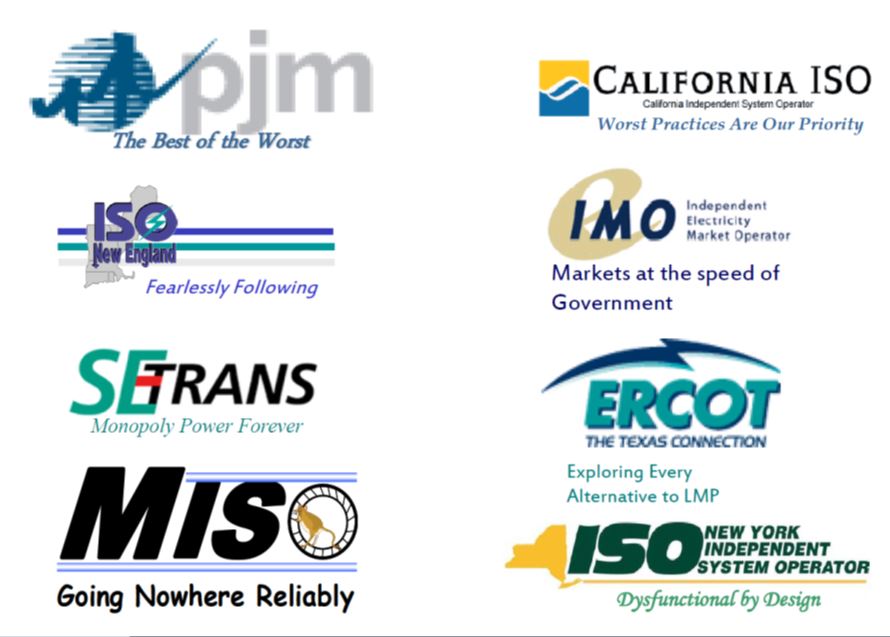Day-ahead markets in the EU include only a coarse, zonal representation of physical transmission constraints. Sometimes this arrangement is justified on the basis that, for example, transmission networks within countries are highly meshed with high capacity, whereas links between countries are weaker. While I do not dispute that transmission systems within countries have been built out with higher capacity than inter-country links, that does not in itself justify thinking of individual countries as “copper plates”. Anecdotally, it appears that transmission limitations within countries are becoming more significant in some EU countries, particularly as new renewable build-outs occur in locations that did not previously have significant generation capacity (this is apparently the case of Germany). As such build-outs of renewables continue, and given the difficulty of building large-scale transmission links, the argument that individual countries resemble a copper plate becomes less realistic. On the contrary, locational values of energy may vary over regions even where there is apparently no internal binding transmission constraint because of the interaction with binding constraints in other regions in a meshed network.
In accordance with a recent piece of European legislation, a process of bidding zone review is ongoing in the EU. To me, locational marginal pricing (LMP) is the logical end point of processes that begin to sub-divide and adapt zones to the physical reality. Nevertheless, LMP does not seem to be on the agenda in the EU, at least for the moment. There apparently continues to be opposition to finer grain representation of transmission constraints into the commercial network model adopted for the day-ahead market. The reason for this choice seems to be the complexity of LMP and the problems that it may create for market participants. Such rationalizations are, to me, a déjà vu of the 1990s US arguments against LMP.
As an amusing caricature, you can look at the spoof logos of the ISOs that were drawn at the time (Figure 1). Tellingly, the spoof logo for the Electric Reliability Council of Texas (ERCOT) interconnection was “Exploring every alternative to LMP”.

This spoof sums up the type of opposition that occurred in Texas. It is the same that I also see today in the EU against reflecting physical realities into the market model. It took nearly a decade to first change the attitude towards LMP in ERCOT and then finally implement it in 2010. See “Shift factors in ERCOT congestion pricing”, for an analysis at the time that proved influential in the decision to change the market model. I would encourage any proponent of a zonal transmission model to perform an analogous study to elucidate the correspondence or otherwise between the incentives from a zonal model and efficient incentives.
Several changes were included along with the opening of the LMP market in 2010, including, for instance, the addition of a day-ahead market to what was previously only a real-time market; the dispatch of individual units instead of portfolio dispatch (necessary but not sufficient for the implementation of LMP); and the shortening of the dispatch interval from 15 minutes to five. In other words, the “big bang” of changing the fundamental market model enabled a number of improvements to be simultaneously implemented. Since then, several other changes and fine tuning have occurred.
ERCOT has seen the integration of the largest amount of renewables of any large interconnection in the world (around 15% of energy in recent years have been produced from wind, a share that is significantly higher than that recorded by Western Europe). Counterfactuals are hard to establish, but statistical analysis can elucidate some important results. Various market changes, most particularly the “big bang” change in 2010, have enabled ancillary services for frequency regulation to be utilized much more efficiently, allowing for many GW of additional wind and, amazingly, an overall reduction in the amount of regulation reserve to be procured. While the improvement in the utilization of frequency regulation is likely due primarily to the shortening of the dispatch interval, the shift to a LMP system allowed for a more effective utilization of transmission capacity. In turn, this has allowed for the integration of higher levels of wind generation than would have otherwise been possible. It has also fostered a highly competitive wholesale generation market that has successfully weathered fluctuations in natural gas prices, the challenges of wind integration, the retirement of significant coal capacity, and continues to accommodate one of the highest demand growth rates in North America.
While the EU review of existing bidding zones is a possible step in the right direction, the US experience tells you that once the fiction of copper plate zones is no longer accepted, the only logical end point becomes LMP. Claimed “complexities” of LMP markets in the US turned out to be far less complicated than the out-of-market actions (such as deploying balancing energy to handle transmission constraints) that are intrinsically necessitated by a zonal commercial network model. Particularly in the context of new generation additions and RES deployment in unexpected places, LMP aligns the incentives for production and consumption in wholesale electricity markets with the physical reality. While retail consumption can continue to be priced zonally in such a system, the underlying wholesale market will work most efficiently, and be able to integrate better large-scale renewables, if it is based on LMP.
Acknowledgement: I would like to thank Nicolò Rossetto and Tim Schittekatte of the Florence School of Regulation for discussions and suggestions on this piece. All remaining errors and confusions are, of course, my responsibility alone. I would also like to thank Professor Jean-Michel Glachant for hosting my visit to the Florence School of Regulation. It has been very fruitful for me, and I hope that these pieces have provoked some useful discussion about electricity markets in the EU.






